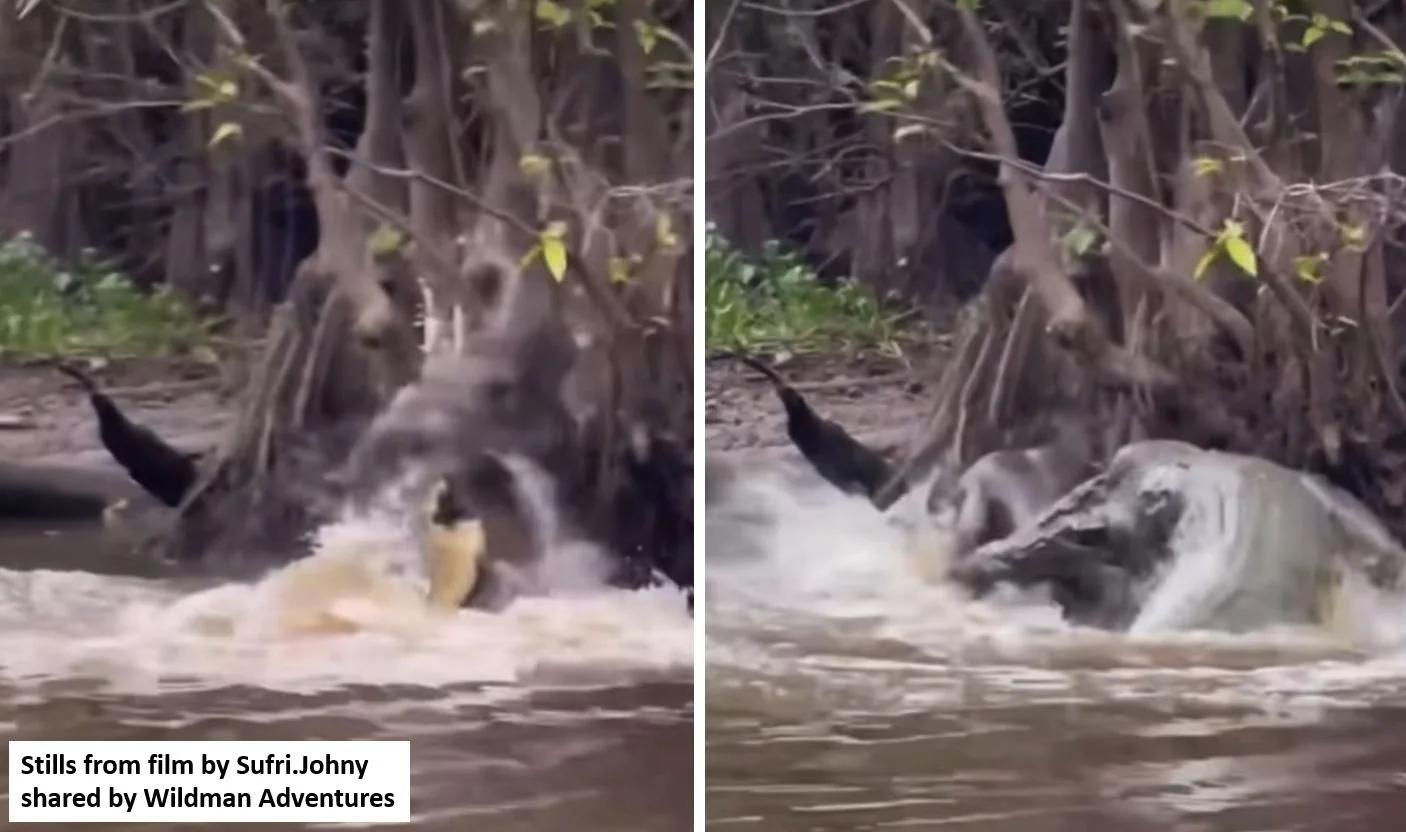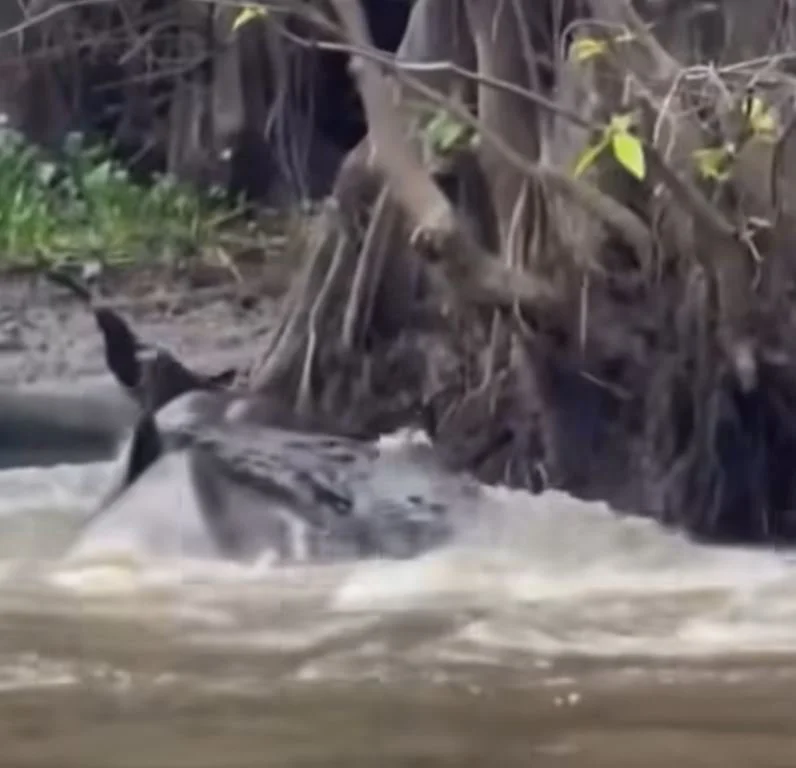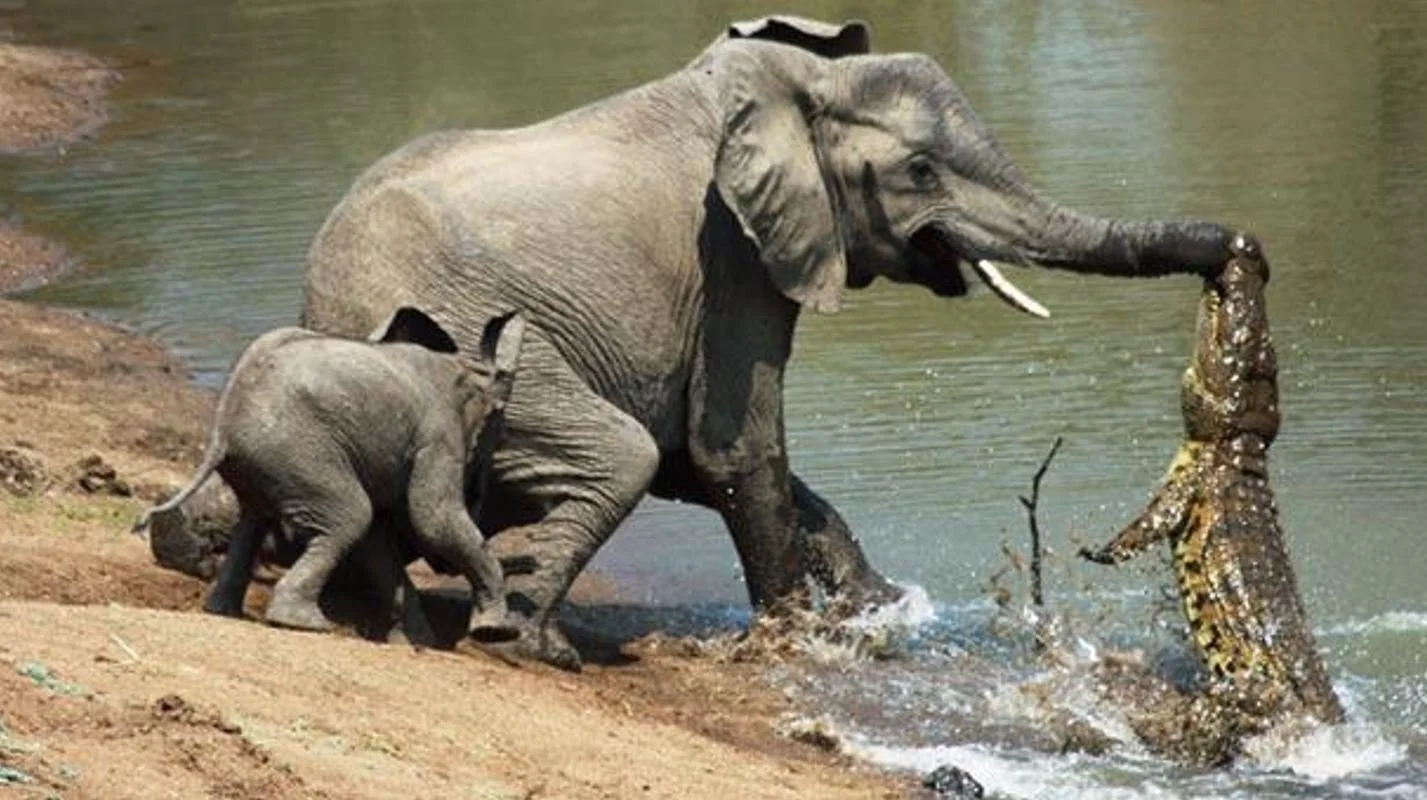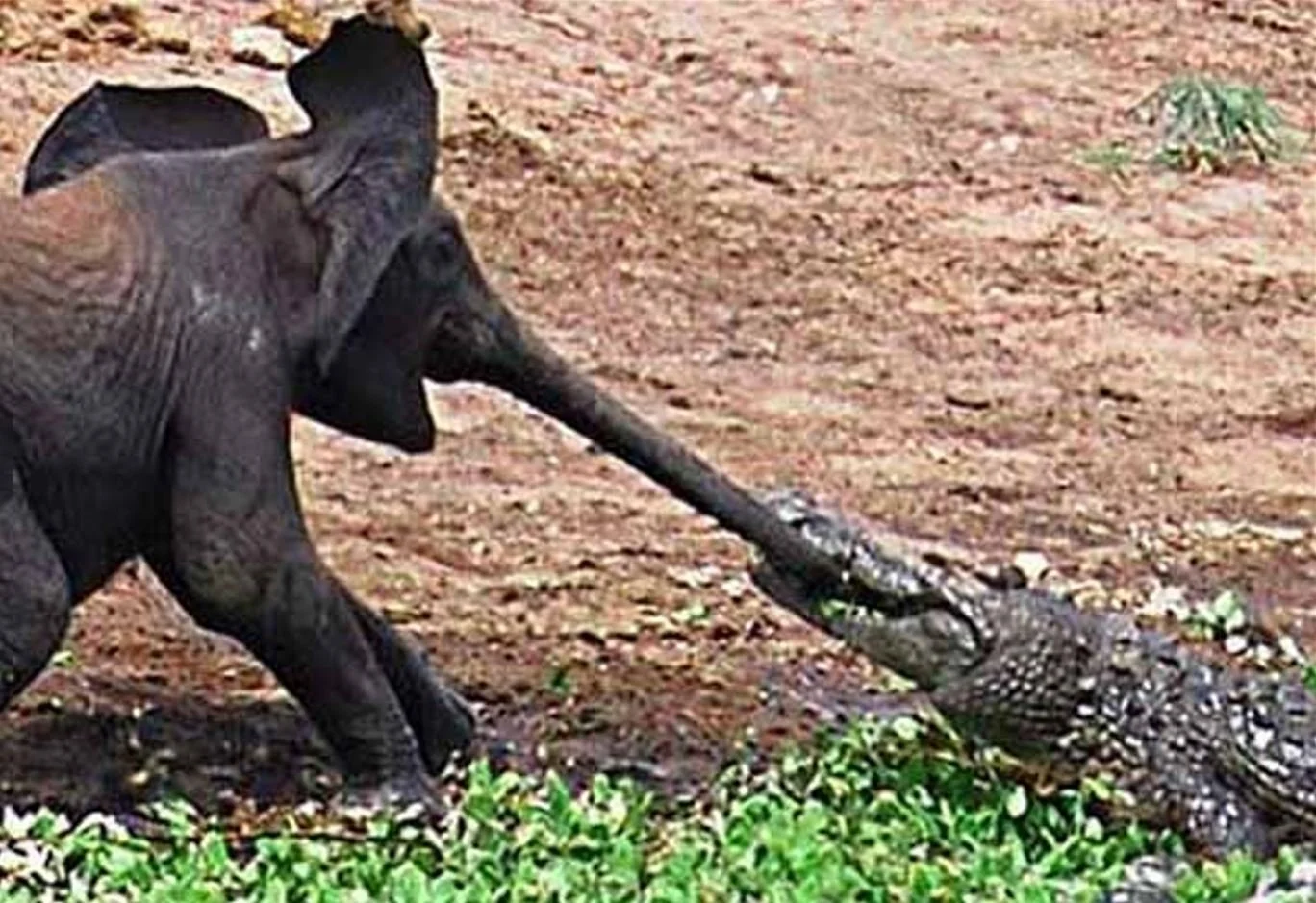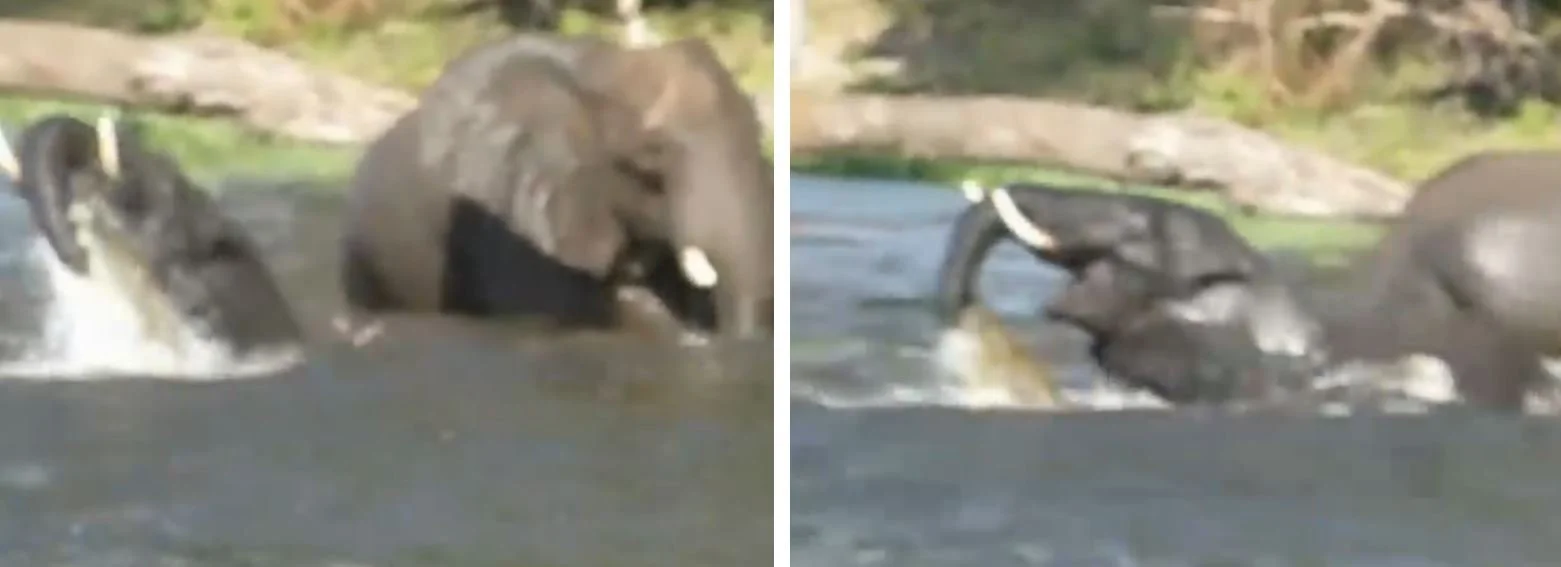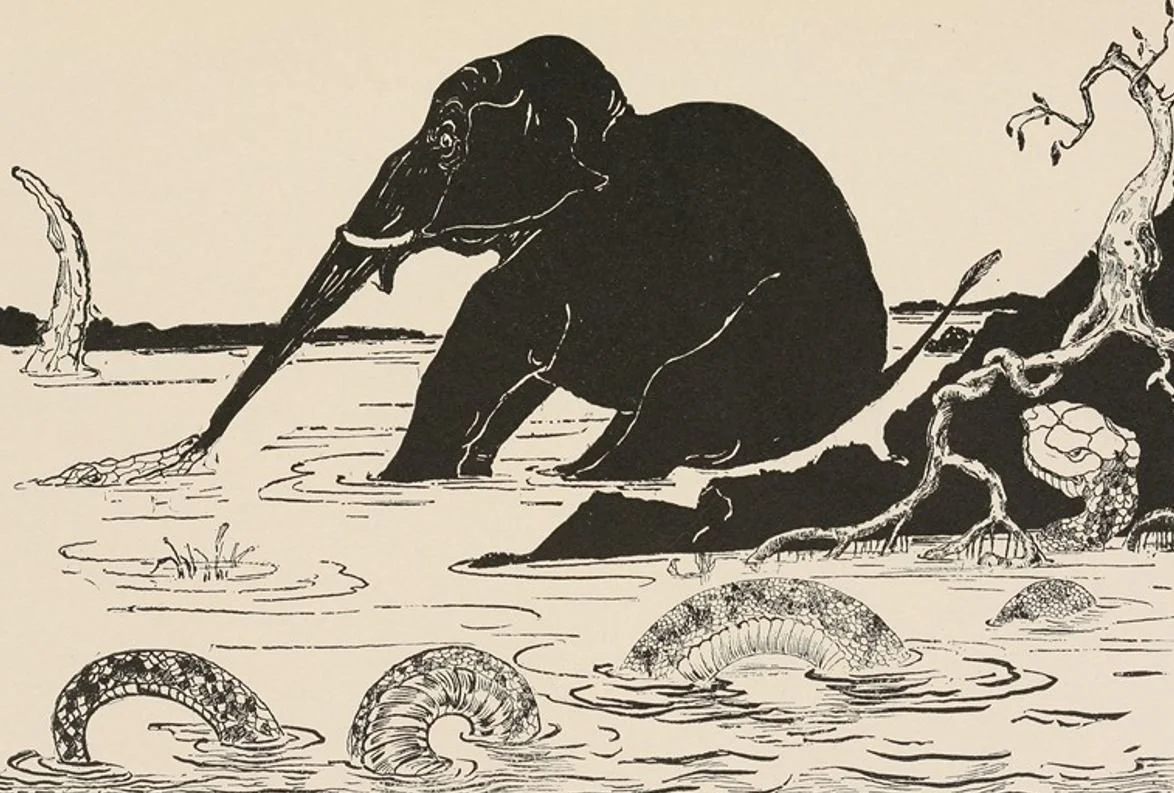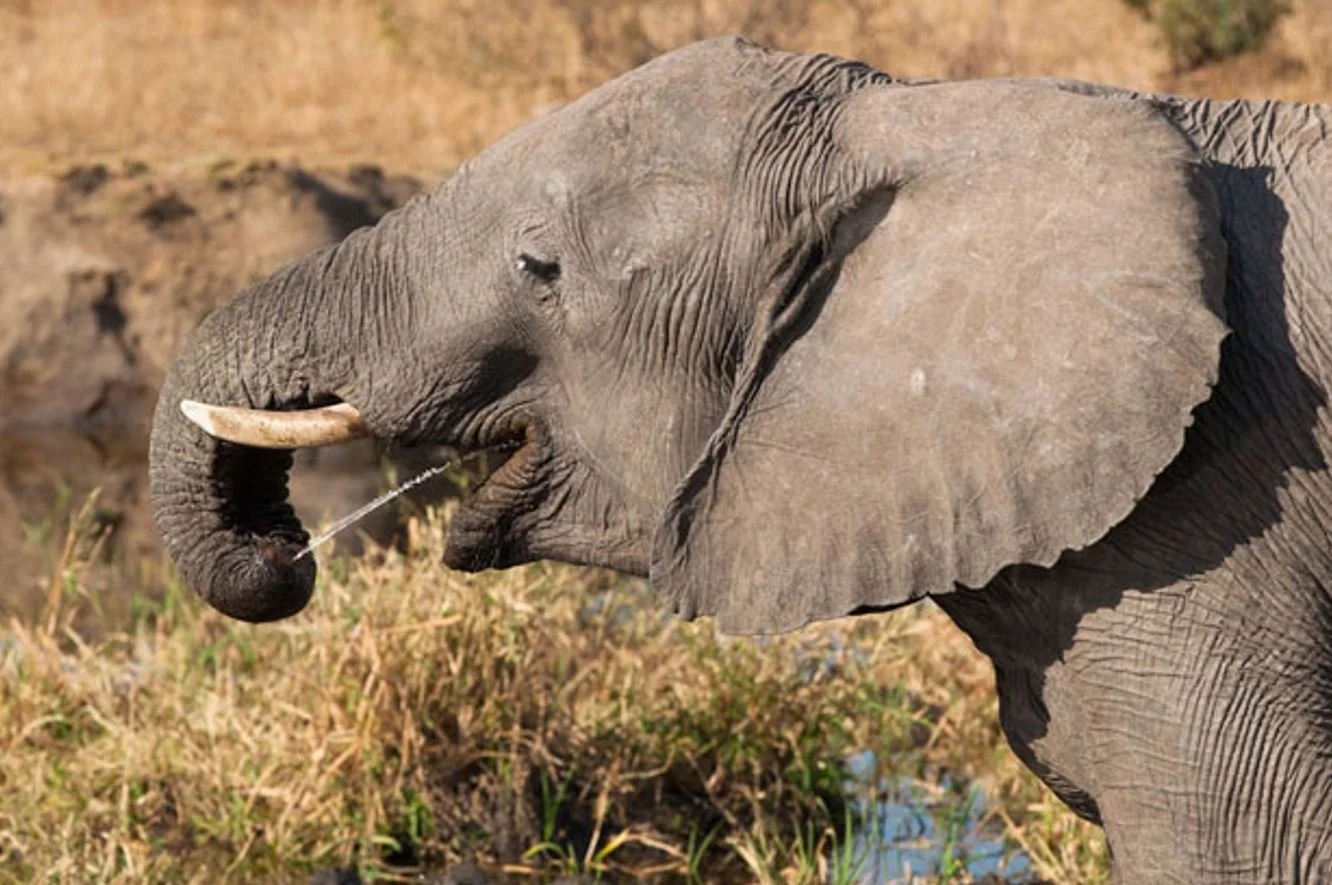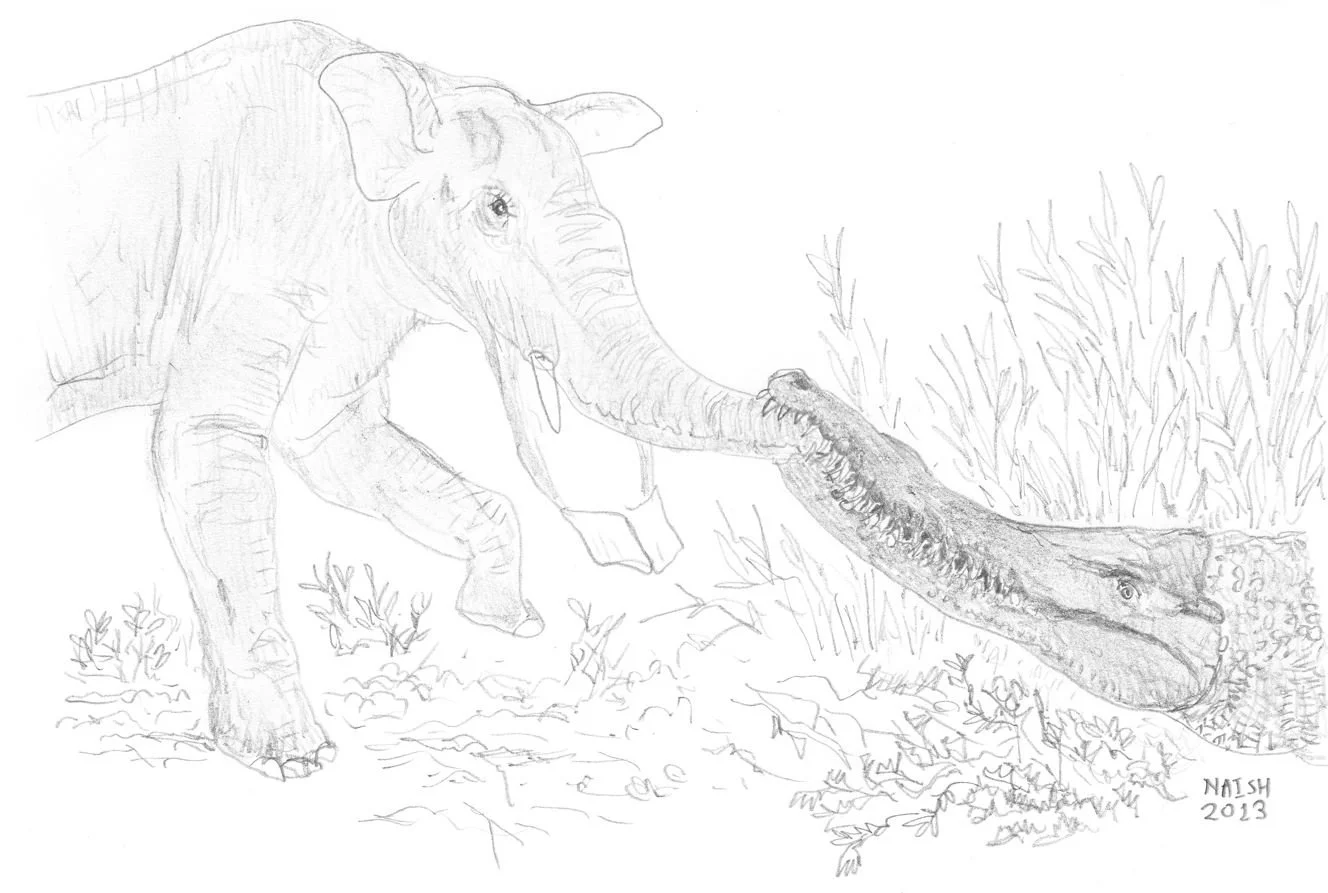Regular readers here will be familiar with my lamentations about the old, archived material from ver 2 (ScienceBlogs) and ver 3 (Scientific American). It’s been lost, destroyed, vandalized, paywalled, or some combination of those things. Today, something happened which has inspired me to rescue one of those articles from ver 3, specifically from 2013 (here’s the original). What inspired it, huh? Well, THIS DID…
Caption: these screengrabs are obviously not the best but… yes, that’s a large Saltwater crocodile Crocodylus porosus attacking a small Asian elephant Elephas maximus. I’m very confident that the footage is real and absolutely not AI. The croc can be identified as C. porosus on the basis of its scute-free dorsal neck surface, not size alone. The footage is credited to © Sufri.Johny and was shared on Facebook by © Wildman Adventures.
You can watch the footage yourself since it’s visible here on Facebook where it’s been shared globally (as in, with the entire internet), meaning that you don’t need Facebook membership or login for access. Ok, the elephant is one of the small ones from the Bornean Sabah population, but it’s still an elephant, apparently an adult one (on balance, it might be a ‘sub-adult’, or or teenager; I can’t tell), and the interaction is still rad as hell. It would appear that the crocodile’s behaviour is opportunistic… and also unsuccessful. On that note, the elephant is not only very much alive at the end of the encounter, but also not seemingly injured at all. I can’t even see any perforations or lacerations on the skin.
Caption: another screengrab, here showing the second lunge from the crocodile, and showing it biting the elephant right across the upper right side of the shoulder region. The footage is credited to © Sufri.Johny and was shared on Facebook by © Wildman Adventures.
Here's where we come to the aforementioned 2013 article. This, you see, is far from the first time that a crocodile has been filmed attacking an elephant. Ok, the other cases we’re aware of – or, I’m of, anyway – are not so impressive and dynamic. But exist they do.
Way back in November 2010 a remarkable photo appeared online, this time showing an adult Nile crocodile Crocodylus niloticus biting the trunk of an adult female African bush elephant Loxodonta africana (a plague upon those bloggers and others who identified the crocodylian as an... alligator. Come on). You've almost certainly seen the photo already: it was widely features in newspapers, magazines, blogs and such. My initial plan was to assume that everybody's seen it, but that would be frustrating to those of you that haven't so, whatever, here it is...
Caption: one of the best of the relevant photos. They were used uncredited quite a bit, but should be considered © Ben Campbell.
Above we see the moment where the mother elephant is raising her trunk, the croc clamped around the end and still in the water. But a whole sequence of events was photographed: the elephant actually pulled the croc right out of the water entirely, at which point the croc let go. The baby elephant tripped over the crocodile, but all three animals survived. In fact, both elephants were definitely ok since they were seen later in the day at the same river (the Luangwa River). This incident happened in Zambia's South Luangwa National Park; the photographer was Swiss tourist Martin Nyfeler. Here's the whole sequence, as it appeared here on the blog Ben in Zambia...
Caption: a full, detailed account of what happened and was photographed is present on Ben Campbell’s blog where it was published in September 2010. The blog is no longer active, but the photos should be considered © Ben Campbell.
Remarkably, this isn't the only time a crocodile has been photographed grabbing an elephant's trunk. During October 2010, Johan Opperman photographed an incident in Kruger National Park, this time featuring a baby Bush elephant. The baby was part of a group that waded across a small river, the surface totally covered in floating plants. As you can see, the crocodile grabbed the baby's trunk. The other elephants rallied to the baby's defence and the crocodile released its grip and disappeared. Here's one of the several images...
Caption: Johan Opperman’s 2010 photo of a crocodile pulling the trunk of a juvenile elephant was published in several places; here’s an appearance in The Telegraph. Image: © Johan Opperman.
But it gets even better. Did you know that croc-attacks-elephant-trunk incidents had been FILMED? Not once, but at least twice. Yup, here's number one... it’s titled Crocodile bites elephant on the trunk and was uploaded by YouTube user 92BMW318is, if that is their real name. Here’s a screengrab, sorry for the terrible low quality…
I can't pretend to have done any research on this specific incident and don't know anything about it, other than it looks like it was filmed in the wild, somewhere in Africa. It's clearly genuine. The elephant that gets attacked appears to be another adult female. After recovering from the shock of "OMG there's a crocodile on my trunk", her reaction seems to involve aggression and retaliation, since she seems to charge into the water in pursuit. And here's number two, though be aware that it’s blurry as hell... (the main incident happens at 0:16-0:17; this version is a shortened version of what was originally a longer video). Again, here are screengrabs of the main moments of interest…
Caption: this attack occurred in moderately deep water (for a river), and a few moments show that the crocodile grabbed the trunk’s tip before letting go. Thanks to RoryD for bringing this piece of footage to my attention. It happened in the Chobe River in Botswana and was uploaded in April 2012 by YouTube user jwakf.
Here's the thing that immediately strikes me about these incidents. They're been photographed or filmed at least four times*. As you'll know if you're an expert on elephant and/or crocodile anecdotes, there are allusions in the literature to at least a few other cases of the same sort of thing. I recall one incident in particular where a crocodile attacked a juvenile elephant; an adult elephant grabbed the crocodile, pulled it on to the bank, trampled it, and threw its corpse into a tree. Anyone recall this as well?
* Five times. Here’s another case from 2015, this time from Sabi Sands Nature Reserve in South Africa.
Anyway, if crocodiles have been seen to attack elephant trunks on at least four five separate occasions, it seems safe to assume that this has actually happened on more occasions than this, since there must be occasions where (1) people didn't film/photograph it, and (2) people weren't there to see it happening. In the grand scheme of things, crocodile attacks on elephant trunks are probably pretty rare… and probably always have been, even if we think of a time when there were far more crocodiles and far more elephants, but... it does make you wonder.
Caption: I’ve never read the Rudyard Kipling stories, but I do know that there’s one called The Elephant’s Child, and that it includes a segment where the elephant gains its trunk thanks to the actions of a crocodile. I believe that this illustration was created by Kipling in 1902; image in the public domain.
None of the attacks mentioned here resulted in the death of an elephant. Indeed, it may be that the crocodiles involved in these incidents made mistakes, thinking that the object that they were grabbing was attached to something far more manageable. However, note that a damaged trunk can prove fatal for an elephant: they can literally be disabled by trunk blockages and amputations, since an inability to forage, drink or breathe can result in declining health and eventual death. This at least makes it plausible that a crocodile could result in an adult elephant's death. On the other hand, elephants can survive with mutilated trunks. The photo below shows an individual photographed by Marlon Du Toit: it had a mutilated trunk and had to learnt to squirt water into its mouth from its damaged trunk tip.
Caption: the full story behind this specific elephant used to be findable online, but I can no longer locate any trace of it, not even at wayback machine. There are plenty other images online of elephants with damaged – sometimes even mostly missing – trunks; it’s clearly a not uncommon problem, linked in part to the widespread use of snares. Image: © Marlon Du Toit.
One final thing. Having said that these incidents are probably very rare, I wonder if they might have happened on enough occasions that elephant behaviour has been modified accordingly. I mean: are there places with high crocodile densities that elephants deliberately avoid as drinking spots? Or are there places where elephants are especially careful, or where they do unusual things to 'test' for the initial presence of lurking crocs? And let us not forget the crocodylians and elephants (and other proboscideans) of the geological past. Forgive me, I couldn't help but knock up the following quick illustration...
Caption: the famous extinct proboscidean (not an elephant!) Platybelodon has an unpleasant encounter with the big, long-jawed fossil crocodylian Euthecodon somewhere in Miocene or Pliocene east Africa. Platybelodon has traditionally been reconstructed as having a broad, flattened structure where elephants have a trunk, but it’s now widely thought that this is wrong, and that it and its relatives had trunks. They weren’t the wading ‘shovel-tuskers’ of tradition, but parkland-dwelling herbivores. Image: Darren Naish.
And everything you read here was inspired by a conversation I had with Mike P. Taylor and Matt Wedel.
For previous Tet Zoo articles on elephants, see...
RIP Yeheskel Shoshani, May 2008
How do you masturbate an elephant?, June 2008
The tangled mammoths, November 2008
The Domes of Wisdom: an Asian Elephant Tale, August 2022

